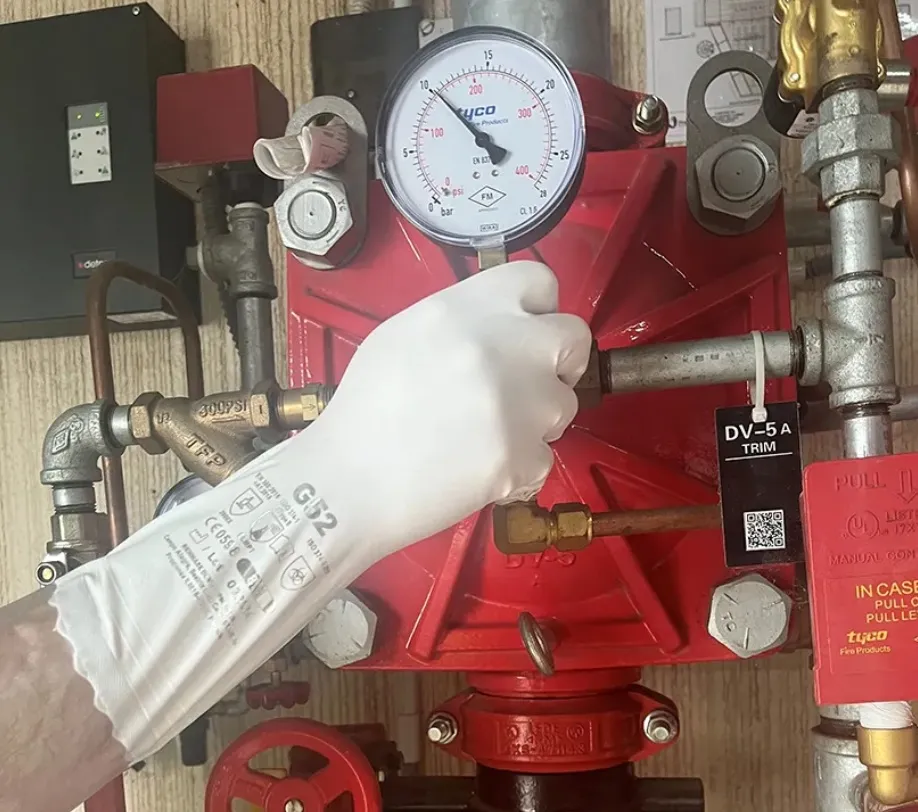Actualidad
Want to know how anti-static gloves work?
Who hasn’t rubbed a plastic pen against a woollen jumper in the dark to see how small sparks are produced? And who hasn’t run the pen through their hair to see how it stands on end or gone down a metal slide in flannel trousers for a hair-raising experience?.
These domestic examples are the result of a growing phenomenon which, in work environments, is an unpleasant yet pervasive problem called electrostatic, or static electricity. In short, this is energy accumulated in objects and bodies when the atoms from the surface are destabilised and give a negative or positive charge instead of a neutral one. This phenomenon is mainly caused by friction with other objects. Given that the tendency of atoms is to regain their neutrality, they will tend to relinquish any excess electrons in order to balance and, if they lack negative particles, they will take them from other bodies with an excess charge, producing a body-to-body current with the passing of electrons.
Therefore, when one body with too many electrons (negative charge) and another with too few (positive charge) come into contact, the negative tends to relinquish them and a discharge occurs in the direction of the electron receiver. Hence the electric shocks when you a door knob or another metal object.
How does it affect work environments?
Risks of explosions, electrical damage, electrostatic shocks and other incidents of varying magnitude may be stimulated by static electricity. Work environments where the adverse effects of static electricity can be felt most can be divided into two options:
- Jobs in which electrostatic discharges (ESD) can occur around sensitive electronic equipment and parts, such as clean rooms for the manufacture of electronic products, nanotechnology and semiconductors.
Electrostatic charge transfer not only affects the electrical properties of electronic parts but it can also cause equipment breakdowns and faults, interfering with their operation. Discharge also leads to a significant risk of fire when solvents or other flammable materials must be handled in the environment.
As for personnel in these work environments, they must wear appropriate personal protective equipment (PPE) to minimise or even eliminate any charge transfer between personnel and component equipment sensitive to electrostatic discharge. More specifically, work gloves in such environments must be manufactured to minimise or even eliminate static electricity.
- 2. Those characterised by the risk of explosion due to the presence of flammable or volatile materials. ATEX is the abbreviation of the French term for potentially explosive atmospheres: ‘Atmosphère Explosibles’. ATEX is also the abbreviation of EU Directive 2014/34/EU, also known as ATEX 114. Under the directive, any object entering an ATEX zone must be designed, constructed and used in a way that does not accumulate static electricity through what is known as a static dissipater or conductor, and often incorrectly as antistatic.
What is the EN 16350 Standard?
This Standard defines the test conditions and requirements for the electrostatic properties of the protective gloves used in the ATEX area, which include conductive threads in the textile lining and filler.
Juba has not only tested the anti-static gloves according to EN 16350 but has also performed tests EN1149-1 and EN1149-3, which are covered by the electronic equipment standard EN61340. These tests measure the surface resistance of materials and charge dissipation.
Here you can learn more about the tests performed by Juba:
Some Juba references on anti-static gloves??
Within the catalogue of over 500 references of Juba work gloves, the following are antistatic or electrostatic dissipation protective (ESD) gloves:

PU1000 is a glove made of polyester and polyurethane-coated carbon fibre on the palm. A model with seamless 13-gauge support that adds touch, lightness, flexibility and comfort, as well as adapting well to the hand for excellent dexterity

Another of the antistatic references characteristic of the Juba catalogue is the TKE03, a seamless glove made of nylon and carbon fibre with polyurethane-coated fingertips and small PVC dots on the palm for a better grip in dry or wet environments.

Within the electrostatic range, Juba’s 141520 glove is made of nylon and carbon fibre. A seamless model that is also manufactured in line with the Standard 100 by Oeko-Tex, making it free of harmful substances.

The 141530 / H141530 model, a seamless nylon and carbon glove with extra-quality polyurethane coating on the palm, which is lint-free.

The 4422 POWER CUT meanwhile, has a polyurethane coating, provides cut resistance, and incorporates K-Rock fibre.

Another antistatic is the 4416 POWER CUT XTATIC, a seamless Dyneema® Diamond fibre glove blended with carbon fibre, nylon®, and polyurethane-coated lycra® fibre on the palm and half back.

Finally, the 5683 glove has a triple anti-static sandy PVC coating on seamless cotton so that, in addition to antistatic, it focuses particularly on the handling of potentially flammable chemicals due to sparks caused by static electricity.
All of these Juba products are available in different sizes for use in clean rooms for electronics, automotive, paint line or petrochemical industries, where static charge control is important.





